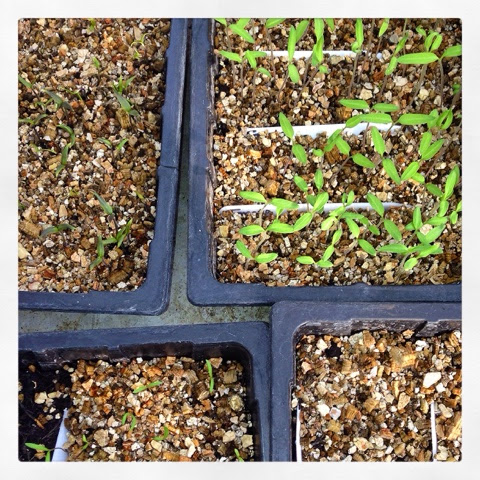For a few weeks at the start of every calendar year I actively seek out colour in the garden. It is never immediately apparent. Winter colour never smacks you in the face.
Occasionally a blue sky accompanied by weak winter sun will throw a new light on Sorbus berries, bright red willow branches or the ghostly pale of Rubus thibetanus stems and this is extremely heartening but it's the small displays of courage in adversity (and, let's face it, January is always adverse) that give me the most amount of pleasure.
I have been fighting brambles and generally winning (the battle but not the war - it is ongoing and everlasting) and I have seen several tiny winter soldiers that have made me smile - snowdrops, pink Viburnum tinus flowers, Clematis cirrhosa, Witch hazel, hellebores, very early Narcissi, Crocus but the snippet of colour that pleased me the most was a glimpse of the underside of a Heuchera (I think it is 'Marmalade ') leaf. Perhaps it sent my senses reeling because of the intensity of the fuchsia bottom contrasting so wonderfully with the acid-lime topside - a combination more associated with the summer months. Or perhaps it grabbed me at just the right moment, but grab me it did and at this time of year I will take all the colour that the garden is willing to shove my way.
So #whatsinmywheelbarrow ?
Brambles and other undesirables and I have the battle scars to show for it. It's good work - it's physical; it's a proper fight and I have won......for now.
Plus......seed sowing has commenced! The tomatoes are off to a flying start closely followed by the chillies.
All of the chilli seedlings in this batch came directly from sun-dried chilli peppers only dissected one week ago. Sometimes food propagation is so goshdarned easy I wonder why we're all not at it!?!

















